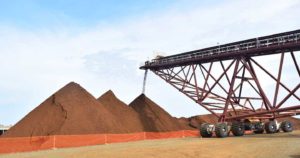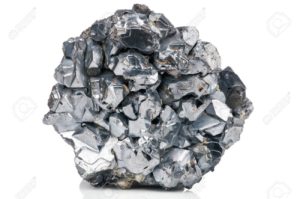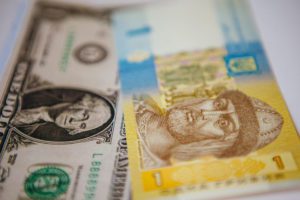
Ukraine imported 13,720 tonnes of cheese and exported 8,340 tonnes in 2018.
According to customs statistics released by the State Fiscal Service, cheese imports in kind grew by 37.1%, to 13,720 tonnes and in monetary terms increased by 41.8%, to $66.81 million.
Cheese exports in kind in 2018 decreased by 7.8% compared with 2017. Cheese exports in monetary terms fell by 5.3%, to $30.8 million.
Ukraine exported most of cheeses to Kazakhstan – 42.8%, Moldova – 28% and Egypt – 11.3%. The country imported these products mainly from Poland – 31%, Germany – 23.7% and France – 15.6%.
In addition, the fiscal service reported that the export of butter from Ukraine over the past year remained at the level of 2017 and amounted to 30,380 tonnes, in monetary terms – $128.6 million.
Ukraine supplied 21.1% of the produced butter in Morocco, 11% – the Netherlands, and 10.6% – Turkey.
In 2018, imports of butter to Ukraine amounted to 1,100 tonnes for $7.47 million, while in 2017 – 750 tonnes for $4.47 million.
Exports of condensed milk and cream last year fell by 24.1%, to 35,550 tonnes. Ukraine supplied condensed milk and cream for $59.19 million, which is 26.5% less than in 2017.
Imports of this group of goods in 2018 increased by 38.6%, to 2,360 tonnes ($5.71 million).
As reported with reference to customs statistics, Ukraine in 2017 exported 9,050 tonnes of cheese, which is 12% more than in 2016. Imports of cheese into the country rose by 42%, to 10,000 tonnes.

Ukraine in 2018 increased imports of nickel ore and concentrate in natural terms by 10% compared to the same period in 2017, to 1.445 million tonnes.
According to customs statistics released by the State Fiscal Service, in monetary terms nickel ore imports rose by 8%, to $69.325 million.
At the same time, imports were made from Guatemala (67.88% of deliveries in monetary terms), and Indonesia (32.12%).
In 2018, Ukraine did not export and re-export these products, as well as in 2017.
As reported, Ukraine in 2017 reduced imports of nickel ore and concentrate in natural terms by 4.2% compared to 2016, to 1.314 million tonnes, in monetary terms by 8.3%, to $64.172 million. At the same time, all imports were from Guatemala (100% of supplies).
Pobuzke Ferronickel Combine (part of Solway Group) imports nickel ore to Ukraine.
The plant processes about 1.2 million tonnes of ore a year.

Ukraine in 2018 increased exports of titanium containing ore and concentrate in kind by 2.7% compared to 2017, to 599,494 tonnes.
According to customs statistics released by the State Fiscal Service, last year exports of titanium ore and concentrate in monetary terms increased by 19.5%, to $125.722 million.
Major exports were made to the Czech Republic (19.41% of deliveries in monetary terms), Turkey (17.96%), and Russia (15.68%).
Ukraine in 2018 imported 15,874 tonnes of similar products worth $3.142 million from Senegal and Mozambique, while in 2017 it imported 202 tonnes of titanium ore and concentrate worth $143,000 from Senegal (87.41%), Finland (10.49%), and Iran (2.1%).
As reported, Ukraine in 2017 increased exports of titanium containing ore and concentrate in natural terms by 26% compared to 2016, to 583,772 tonnes, and in monetary terms exports increased by 25.3%, to $105.235 million.
Major exports were made to the Czech Republic (16.87% of deliveries in monetary terms), the United States (15.46%), and Turkey (14.68%).
Ukraine in 2017 imported 202 tonnes of titanium ore and concentrates worth $143,000 from Senegal (87.41%), Finland (10.49%) and Iran (2.1%), while in 2016 it imported 160 tonnes for $90,000.
Vilnohirsk state mining and metallurgical combine (Dnipropetrovsk region), Irshansk state mining and processing combine (Zhytomyr region), Valki-Ilmenite and Mezhdurechensk Mining and Concentration Complexes (both are located in Irshansk, Zhytomyr region) are the main producers of titanium ore in Ukraine.
Dnipro-based Velta production and commercial firm built a mining and processing complex at the Birzulivske ilmenite deposit, which has a 240,000-tonne ilmenite concentrate capacity per year.
Holding company Velta Group Global Ltd. was registered in London in November 2011.

Pharmaceutical company PJSC Farmak (Kyiv) is exploring opportunities of exporting active pharmaceutical ingredients (APIs, substances). The company may ship the first batches of APIs as early as late in 2019, Head of Farmak’s API Department Vasyl Kushniruk said during a press tour to the town of Shostka in Sumy region, where the company has an APIs production facility. “There are no sales today, but we plan to start selling in October this year and ship first tonnes of the substances,” he said.
If necessary, Farmak may triple API output, he said. “We have premises where we are ready to deploy lines to produce APIs if there is a sales market. Over a year we can triple our planned capacity,” he said. “Before last year, the company was not involved in sales of substances and we didn’t plan to sell them, but we have already got several requests that showed that there is demand for the purchase of substances, in particular, in the European market, and we are studying this issue,” he said.
Farmak’s investment in the organization of production of APIs in Shostka in 2010-2017 amounted to $40 million.
Farmak started producing APIs at the Svema industrial park in Shostka in 2015. The production meets environmental and GMP standards. In 2018, emissions of pollutants into the air by the API production department in Shostka amounted to only 1.9 tonnes per year, which is within the established limits. Of these emissions, 99% are those from the boiler house.
Farmak’s API production facility in Shostka is equipped with modern equipment and the latest air and water purification systems with a purity level of 95-99%. Its equipment was supplied by such well-known European brands as MVB and GEA. Thanks to modern sewage treatment plants of famous brands, the company’s impact on the environment is minimum.
In 2017, Farmak produced about 80 tonnes of APIs.
As was reported, PJSC Farmak opened a new production site for tablet production in December 2018, investment in amounted to EUR 20 million. The site will allow Farmak to double the capacity for the production of solid dosage forms, to 3 billion units per year.
By 2023, Farmak plans to increase exports to 40%. Currently, the share of Farmak’s exports is more than 25% of total sales.
PJSC Farmak is among Ukraine’s top three pharmaceutical producers and is a member of the Association Manufacturers of Medications of Ukraine (AMMU).
PJSC Farmak’s beneficiary is Chairperson of PJSC Farmak’s supervisory board Filia Zhebrovska. She owns 80% of the company’s shares.
In 2017, Farmak increased sales in the country’s retail pharmaceutical market by 21% in monetary terms. Its net profit grew by 29.9%, to UAH 839.09 million.

Czech Airlines (the Czech Republic) will resume flights on the route Prague-Odesa-Prague from May 30, 2019, according to the website of Odesa International Airport. According to the press service of the airport, from May 30 Czech Airlines flights from Prague to Odesa will be operated twice a week on Mondays and Thursdays. From June 17 a flight on Saturday will be added, and from July 1 on Wednesdays. The departure time is 22:45 local time. The travel time is 2 hours.
Aircraft from Odesa from May 30 will depart on Tuesdays and Fridays; from June 18 also on Sundays, and from July 2 on Thursdays. The departure time is 05:00 local time.
Czech Airlines is the flagship aircraft of the Czech Republic and operates flights from Prague in the main destinations in Europe and Asia.

The enormous purchasing power of the dollar in Ukraine is confirmed by The Economist’s latest Big Mac Index. In a survey of 50 major economies, plus the Euro zone, Ukraine has the second most undervalued currency, bested only by Russia.
In a gauge of purchasing power parity, the hryvnia is 65% below where the dollar exchange rate should be. Instead of 28 hryvnia to the dollar, the Index says the hryvnia exchange rate should should be about 10 hryvnia to one dollar.
By comparison, the Russian ruble is 70% undervalued, the Turkish lira is 64% undervalued, and the Moldovan leu is 59% undervalued.